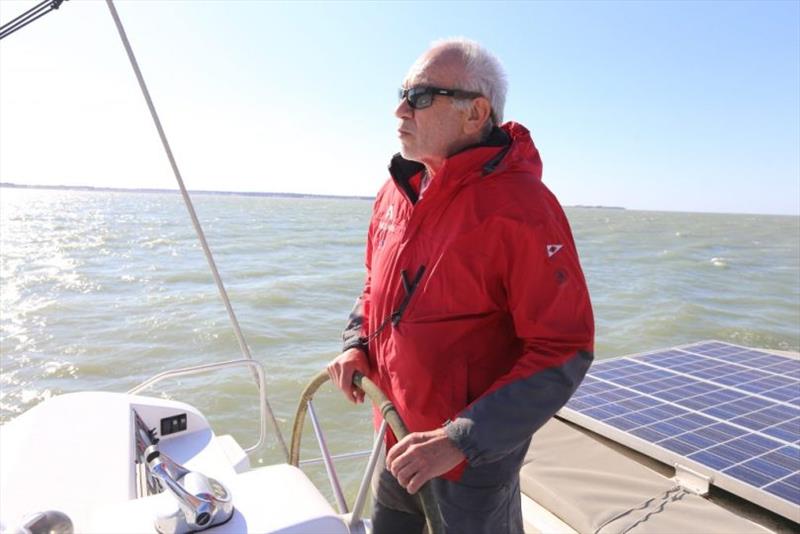
Bernard Nivelt acquires a Leen 56
by Leen Trimarans 13 Jan 2021 06:28 PST

Bernard Nivelt © Leen Trimarans
Bernard Nivelt is an internationally renowned architect considered one of the best architects of his time, he is also recognised as a great sailor.
Long associated with the late Michel Joubert, they drew the plans of many famous pleasure yachts, racing trimarans and travel boats, as well as the plans for the Swift Trawler.
Neel-Trimarans called upon this brilliant architect, without hesitation and in total confidence, to design the company's new range of engine powered trimarans.
In December 2020, Bernard Nivelt decided to purchase a LEEN 56 for his own use.
Why did you choose to buy a LEEN 56?
At the beginning of our association, Michel Joubert built a small racing boat for himself to test a new idea. Personal involvement has always been in the DNA of Joubert - Nivelt. Whenever we wanted to think outside the box, we did not hesitate to become personally involved. Several racing prototypes followed, then some rather special cruising boats: the JNP catamaran, the Santorini motor catamaran (I bought it back), Michel's Marguerite motor sailor.
The purchase of the LEEN 56 is an extension of this philosophy. The LEEN meets the specifications I had set for my future boat. I intend to test several options: electric propulsion, hydrogen fuel cell, foils...
I hope sailing on a LEEN 56 will help promote this new range. If the architect chooses for his boat a model he has designed and is satisfied with, it will reassure future owners!
What is your project with this boat?
I have decided to make it my main residence. The boat offers a large enough living space to live there comfortably full time. I will be able to change my environment as I wish.
What are the advantages of a LEEN compared to another motor yacht of this size (mono or catamaran)?
In terms of comfort at sea, the trimaran represents a good compromise between a monohull and a catamaran. Moreover, the drag will be very close to that of a catamaran, hence a low consumption at medium speed and a large autonomy.
How do you see the travel powerboat market?
It's necessarily a niche market for enthusiasts, as most of the production multihulls are dedicated to rental.
What would you say to someone who is hesitating between a LEEN and another motor model?
It all depends on the programme: a multihull offers a very comfortable living space, a large range at cruising speeds, but it can be more difficult to fit it into a marina, even if these tend to be reconfigured and fitted out to accommodate multihulls.
How do you manage the double cap, architect and client of a LEEN trimaran?
As I'm at the end of my career, I don't intend to design competing boats in other yards, as this would put me at odds with Leen Trimarans. Moreover, I have a lot of pleasure working with the whole team.
When the anchorage rhymes with peace and silence
To be at anchor rather than in a marina is to choose calm and silence. However, sometimes the anchorage can be degraded on the one hand by the noise of the generator that powers the onboard equipment and on the other hand by the rolling. However, aboard a LEEN, at anchor, you will suffer neither from the noise caused by the generator nor from rolling.
In fact, the basic 22kwh power package offers more than a day (24 hours) of autonomy at anchor for the on-board equipment, without starting the generator.
And once this period has elapsed, all that is needed is to run the generator for 1h30 to recharge the batteries for a new 24-hour autonomy cycle.
Another advantage of the hybrid motorisation, if you wish to leave a mooring discreetly, you will only have to manoeuvre with your two electric auxiliary engines in complete discretion.
As for the roll usually found on conventional trawlers, the two side floats of the LEEN correct this defect and stabilise the boat making anchoring highly comfortable.
It is not necessary to add a gyroscopic stabiliser on a LEEN to counteract roll.